A traditional tartare comprises a dish of raw meat seasoned with salt and pepper, punctuated with onions and capers, splashed with Worcestershire sauce and finished with an egg yolk on top. It’s an iconic creation that has various iterations across different cuisines from Lebanon’s kibbeh nayyeh to Korea’s yukhoe and Turkey’s cig kofte.
While beef has long reigned supreme (and for good reason), chefs have long been making a case for the original while putting other options in front of diners such as fish, kangaroo and lamb.
Hospitality speaks to Jimmy Richardson from Leonards Bar & Bistro, Victoria Scriven from Jane and Samy Mir-Beghin from Gimlet about essential meat cuts, dicing techniques and the steps behind the palate-starting dish.
What we now identify as tartare can be traced as far back as the 13th century when Mongol warriors called Tatars tenderised meat under their saddles to later consume raw. The story is potentially a myth — and has questionable origins and motives — but tartare went on to appear again six centuries later. This time, on the menu at New York restaurants that listed a Hamburg steak, which saw minced beef salted and smoked and served with onions and breadcrumbs.
Various forms of tartare have enjoyed a mainstay status across cuisines not limited to Hungarian, Chilean and Ethiopian. Here in Australia, it’s been an ever-present staple at fine-dining and Euro-centric restaurants, with most diners shedding any qualms about consuming raw meat over the years.
At Trader House’s Gimlet at Cavendish House in Melbourne, the steak tartare is a collaborative lunch-only dish from Restaurant Manager Samy Mir-Beghin and Head Chef Colin Mainds, who compare the iteration to a perfectly balanced martini or a freshly shucked oyster dropped with lemon juice.
Mir-Beghin and Mainds have long had an affinity for tableside tartare, with Mir-Beghin watching the dish being assembled during an after-work meal at Le Relais Plaza in Paris and Mainds sampling the dish at Brasserie Georges in Lyon as a young chef. So, it made perfect sense the pair would recreate both the dish and the experience at Cutler & Co and now, Gimlet. Mir-Beghin and Mainds both subscribe to the idea that if cocktails are made in front of guests, why shouldn’t their snacks be, too?
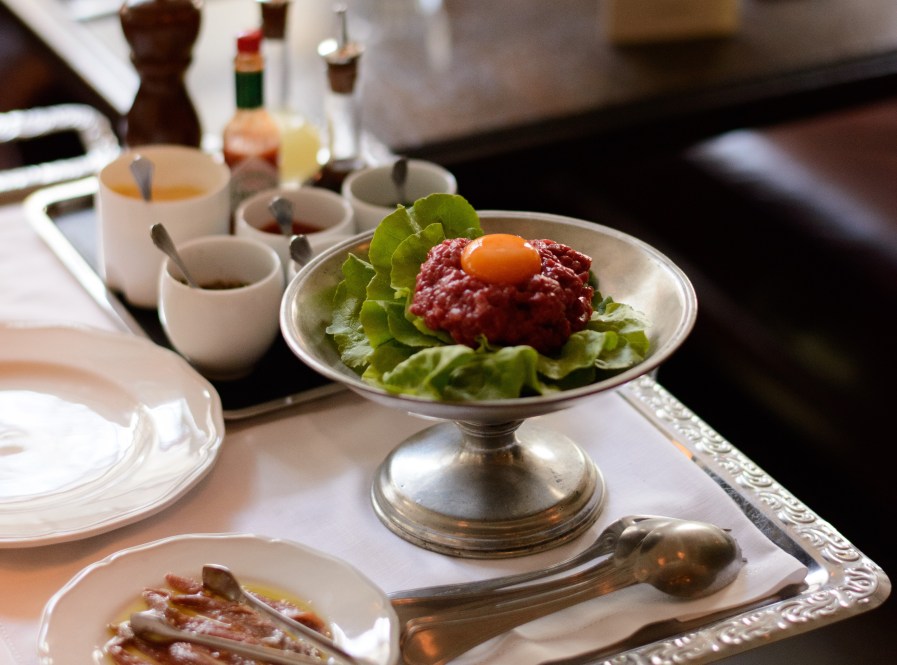
Gimlet’s tartare naturally starts its process in the kitchen where chefs hand cut up to eight portions of O’Connor grass-fed beef from Gippsland for service. “We use rump cap, which is very tender when it’s raw and doesn’t have much fat,” says Mir-Beghin. “The beef is cut into pieces that are not too big or small, and then it’s put in the fridge until the dish is ordered.”
The tartare is not on the official menu at Gimlet and is only available on weekdays and in limited numbers. It takes around five minutes for Mir-Beghin to put together the tableside tartare in front of guests, kicking things off by mixing an emulsion of mustard, olive oil and egg from his tray of ingredients. “We season it with white peppercorns and salt, and then I ask the guests how spicy they would like it and add Tabasco according to their tastes.” The degree of heat is the only part of the process guests get involved in, with the rest of the dish composed according to Gimlet’s recipe.
Worcestershire sauce, salt and pepper are put in the bowl with the emulsion before the meat is mixed in and the ketchup and lemon juice is added. “We incorporate the classic condiments of capers, cornichons, chives and shallots and do a final mix where I incline the bowl so people can see it,” says Mir-Beghin. “We use a ring to plate the tartare and finish the dish with fresh pepper and chives before an Ortiz anchovy is dropped on top, which is Andrew’s [McConnell] touch.”
The tartare is served with a generous selection of vessels for diners to scoop the meat onto including fries, green salad and grilled croutons. It’s the final piece of the puzzle, which concludes the theatrical experience. “Everyone is so surprised,” says Mir-Beghin. “The waiter briefs them, but when people see me bring the tray over, they are amazed. Having something like this happening in a busy restaurant is like a performance in a way. What we do is very close to what you’d get if you went to a bistro in Paris; the idea was to stay as close to the experience as possible and the tartare comes exactly how it should be – nothing is missing.”
Jane restaurant opened its doors in Sydney’s Surry Hills last year, with Victoria Scriven taking on the role of head chef. It’s the second venue for Owner and Chef Tristan Rosier, who created the first iteration of the kangaroo tartare on Arthur’s menu. “It was one of Arthur’s opening dishes, so it made a lot of sense to bring it back when we were writing the menu for Jane,” says Scriven.
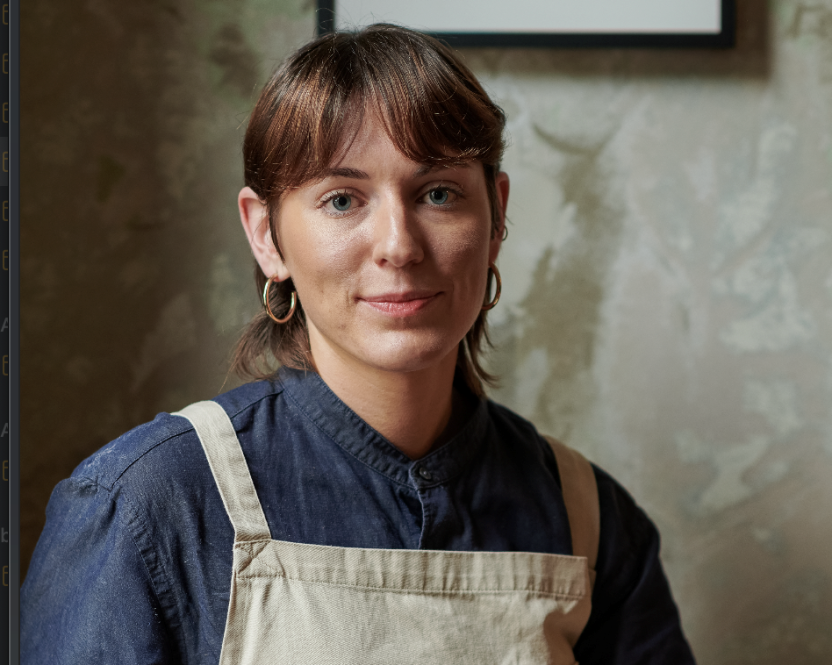
The chef is personally a big fan of tartare, and believes it’s the perfect way to start a meal. “I love tartare and think it’s a quintessential menu item,” she says. “It really lends itself to so many different iterations from steak to tuna and even lamb; it always feels really indulgent.”
Kangaroo with bush tomato tartare is ordered by almost every table and is served with shoestring fries, naturally. “It’s a very popular dish and I think it showcases what we are about at Jane and our approach to Australian cuisine,” says Scriven.
The team works with kangaroo from Paroo, a premium supplier that sources ethical and sustainable wild kangaroo from the Paroo Darling region in far west New South Wales. A naturally lean cut, sirloin is used for its tenderness and bold and earthy flavour. Chefs begin the dish by slicing the meat. “It needs to be slightly firm, so we freeze the slices and then dice into 1/2cm cubes,” says Scriven. “I enjoy tartare with a little bite, and we don’t want miniscule cubes that disappear on the palate.”
Next, the kangaroo is seasoned with salt and pepper and mixed with chilli, bush tomato harissa and chives. “The kangaroo is really bold, so we wanted to complement it with the slight sweetness of tomatoes, fermented chilli and the bitterness of bush tomato,” says Scriven. “We serve it with a kefir cream, fried capers and fries. The result is robust and savoury and a sensory awakening when it’s topped with the crispy fries!”
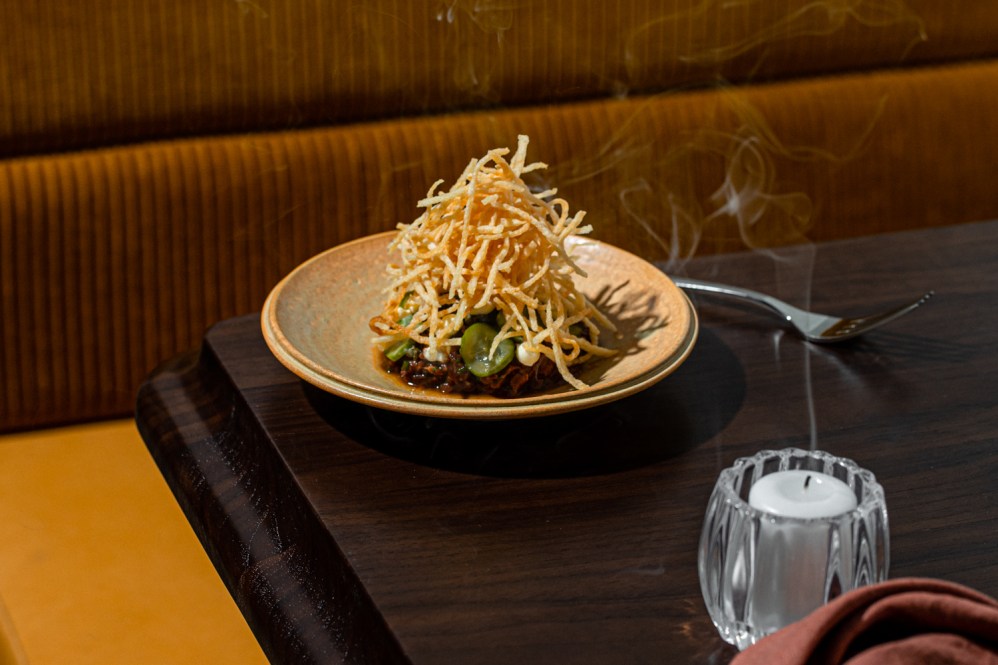
Over in Brisbane, lamb is the protein of choice at Leonards Bar and Bistro in Brisbane. Jimmy Richardson has recently taken on the role of executive chef of the venue after time at Gerard’s Bistro and describes the experience of eating tartare as primal. “Tartare is better than most steaks, to be honest,” says Richardson. “I like to have it before eating any warm dishes.”
And that’s exactly how the dish appears on the menu: in the starters/snacks section. Leonards’ tartare is served in an almond crisp with carrot escabeche and ordered by the piece. “If you want four or five to yourself, you can,” says the chef. “It’s quick for us to plate and it’s a great introduction to what we do; when it arrives at the table it almost looks like a taco cross cannoli.”
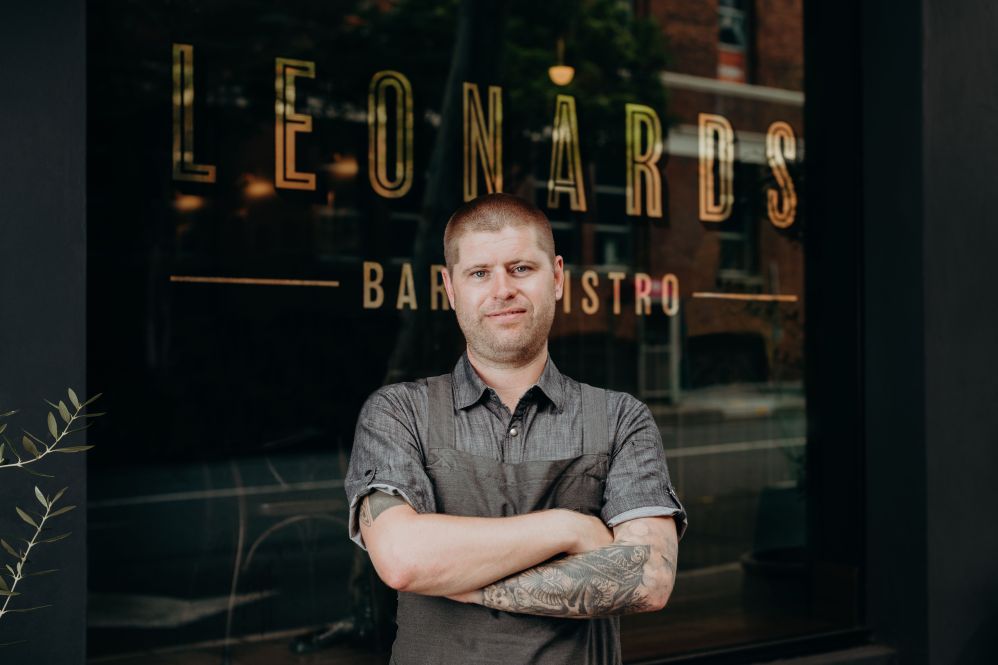
Lamb shoulder from Margra or a Tasmanian producer is trimmed down to ensure there’s no fat or sinew present. “We age it in the fridge for up to two days, which takes away excess moisture and intensifies the flavour a little bit,” says Richardson.
A chopping board and bowls are placed in the fridge alongside the lamb to ensure the meat is kept as chilled as possible throughout the preparation process. “I like there to be various sizes of meat, but the maximum is probably a quarter of a cm; you don’t want it to be too small with no texture or so large you have to chew on it,” says Richardson. When a 50g portion is achieved, the meat is placed in a chilled bowl, so it doesn’t come up in temperature.
Marination is the next step, which sees 1 per cent salt, smoked harissa and toum combined with the lamb just before service. “Once you mix sauces together, water content naturally seeps out and the lamb can cure if you leave it for too long,” says Richardson.
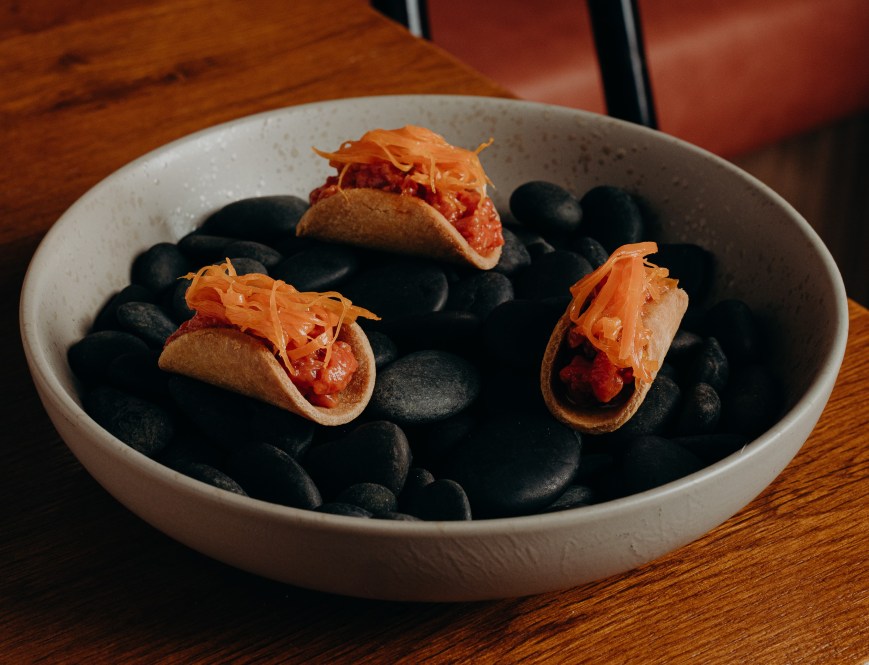
Fermented carrots are a key component of the dish and represent the escabeche element. “We use cumin, fennel, coriander and marinate the carrots with olive oil, vinegar and 2 per cent salt,” says Richardson.
“We have them in the kitchen for up to two weeks depending on the heat and then we drain off the liquid, remove the spices and they’re ready to go. It ends up having the traditional Spanish escabeche flavours.”
The fermented carrots and lamb are served in an almond shell, which is made in-house. “We make a ‘taco’ dough, cut it and soak it in olive oil before moulding around metal pipes and baking in the oven until crispy,” says the chef.
“People who order it love eating a taco at a restaurant and the feedback has been overwhelmingly positive. Before, people wouldn’t eat tartare unless it was from a specific restaurant, but now it’s so common.”
Sponsored Content

Edgell Supa Crunch Delivery Chips — the chip with the hold time superpower
Sponsored by Simplot

Suttons Beach Pavilion food & beverage opportunity, tender open 14 May
Sponsored by Future Food
Trending Now
Resources
Lorem ipsum dolor sit amet, consectetur adipiscing elit. Fusce ac ornare lectus. Sed bibendum lobortis...
Lorem ipsum dolor sit amet, consectetur adipiscing elit. Fusce ac ornare lectus. Sed bibendum lobortis...
Sign up for our newsletter
